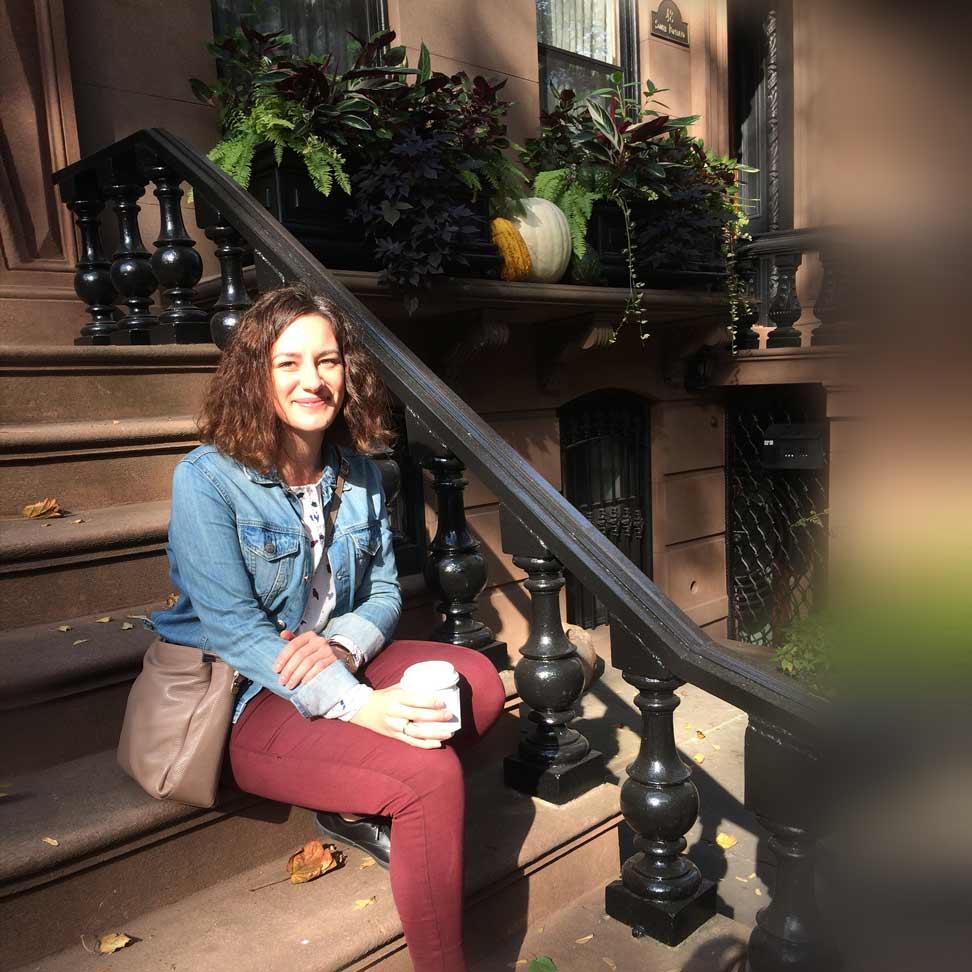Germany’s Romantic Road sits high up on the list of scenic routes, not least due to the magnificent and well-kept medieval architecture, the dramatic Alps lurking on the horizon and some of the most picturesque villages Europe has to offer.
Though the route has been around for centuries, its promotion under the name Romantic Road dates back to the 1950s, when post-war Germany was desperately trying to attract more tourists to the region. Spanning 350 km, the route starts in the historic city of Würzburg and ends close to the Austrian border, in the small town Füssen.
The easiest way to criss-cross the route is by car, stopping along the way and lingering in the ancient villages and towns. Other travel options include bus tour, biking or even walking.
Let the great German composers accompany you on this unforgettable road trip. Just hit play and off you go.
Day 1 Arrival in Frankfurt
Römerberg, Frankfurt’s old central square
Start your journey in Frankfurt am Main – Germany’s fifth-largest city, a financial centre of the European continent and home of the original hot dog.
Don’t let the steel skyscrapers fool you. Frankfurt is at its heart a traditional city. Stroll around the Altstadt (the historical centre) and stop by the old central square, Römerberg. Though most buildings here were destroyed during World War Two bombings, you can get a glimpse of what the city used to look like, due to extensive reconstruction. If time permits, peruse some of the city’s museums: find European art masters at Städel Museum and learn a bit about Germany’s most famous writer at Goethe-Haus.
Don’t leave town before you taste a Frankfurter Würstchen (smoked pork sausage) washed down with Apfelwein, apple wine.
Recommended hotel: 25hours Hotel By Levi’s (rates start at €72 [A$90] per room, per night)
Day 2-3 Würzburg
Würzburger Residenz in all its glory
The Romantic Road starts in Würzburg, located an hour’s drive from Frankfurt. Built around the Main River and surrounded by rolling hills, Würzburg is home to impressive architecture and fine wines.
In 686, three Irish missionaries arrived in town and tried to convert the town ruler to Christianity. While their attempt failed, decades later they were considered martyrs and were sanctified, and Würzburg became a pilgrimage city. At the same time, the town became a bishopric when Saint Boniface was appointed bishop.
Later on, Würzburg became a duchy as well, and this meant the town was ruled by prince-bishops who brought their wealth here. Under their leadership, the city underwent a period of growth and lavishness, exemplified in places like the baroque palace Würzburger Residenz, once the seat of the reigning prince-bishop, rococo-style church Käppele, and Festung Marienberg, a medieval fortress rising high atop the city and surrounded by vineyards.
A view to take in: Festung Marienberg encircled by vineyards
With ample vineyards stretching around the city, there are plenty of opportunities to sample some of the production. One of the most famous and oldest vineyards, the Würzburger Stein, lies just outside the city, and with 12 centuries of winemaking experience, the wine here won’t disappoint.
Recommended hotel: Novotel Würzburg (rates start at €96 [A$132] per room, per night)
Day 3-4 Tauber Valley
Karlsquelle, one of three drinking springs in spa town Bad Mergentheim
A short 30-minutes’ drive from Würzburg and you’re in Tauberbischofsheim, at the western end of the Tauber Valley. Literally meaning “the home of the bishop in Tauber”, this town’s history is entangled in religious practices.
Archaeological discoveries unravelled a long history of settlements that go back to 3000 BC, yet the first written mention stems from the 9th century in connection to the life of the English missionary nun Lioba. Today, she is the patron saint of Tauberbischofsheim, and a visit to the Liobakirche (St Lioba’s Church) will give you an understanding of her life – one dedicated to the education of women.
Take to the road again, yet don’t get too comfortable in your seat. Next stop is Bad Mergentheim, home to one of Southern Germany’s spa resorts. The rich mineral springs contain sodium sulphate water, especially effective for the treatment of digestive disorders. Whether you’re looking for a massage, an Ayurvedic treatment or a quiet hour in the sauna, chances are you’ll find it here.
Take a walk through the many vineyards of Lauda-Königshofen © Holger Uwe Schmitt
Alternatively, go on a wine tour combining wine tastings with food, history, music, winemaking and hiking.
Recommended hotel: Kur Hotel Alexa (rates start at €119 [A$170] per room, per night)
Day 5-6 Rothenburg ob der Tauber
Markusturm dates back to the 12th century and was among the first town fortifications
All relaxed and energised, you’re ready to take in the many medieval landmarks of Rothenburg ob der Tauber. The name translates to “red fortress above the Tauber”, referring to the town’s location overlooking the Tauber River and the red roofs of the houses. Rothenburg’s well-preserved town walls are pierced by 42 gate houses and towers. Stop by Klingentor, used as a water tower, Markusturm, one of the first fortifications, and Rathausturm (Town Hall Tower) for a panoramic view of the town.
Walking along cobbled streets, you’ll notice that each building here is special. Some of the most distinctive ones include the unusually shaped Fleisch- und Tanzhaus (Meat and Dance House), the Hegereiterhaus with its distinctive lantern-style turret or the Rathaus (Town Hall) boasting various architectural influences.
Join in the cheer at historical festival Meistertrunk, one of Rothenburg’s most famous events
Rothenburg also hosts several noteworthy events throughout the year. The Shepards’ Dance, a dance routine from the 15th century, takes place several times a year. The Rothenburg Wine Festival, combining wine tastings with food and music, is held annually in August. The Historical Festival Play Meistertrunk (Master Draught), which tells the heroic story of Mayor Nusch who saved the town from destruction, occurs during the Pentecost holidays.
Recommended hotel: Romantik Hotel Markusturm (rates start at €133 [A$186] per room, per night)
Day 6-8 Augsburg
High up on the grassy hills – Harburg Castle
Take the road south towards Augsburg, Germany’s third oldest city. Along the way, you’ll pass Dinkelsbühl, a town that draws huge crowds during Kinderzeche, an annual children’s festival taking place in July. Here you can witness the re-enactment of the town rescue by the town’s children, led by the gatekeeper’s daughter.
Nördlingen is worth a visit too – if not for the beautifully preserved town walls, for the Rieskrater Museum, where you’ll get to learn about the meteor that struck this area some 15 million years ago.
For castle lovers, a stop in Harburg is a must. Towering over the peaceful town, Harburg Castle beautifully exemplifies medieval architecture and comes complete with sentry walk, prison tower, dungeon and ballroom.
Hercules Fountain with Basilika St. Ulrich und Afra in the background
Tired, are you? You’re in luck. You’ve reached the final destination of the day, Augsburg. The city was founded by Emperor Augustus’ stepchildren in 15 BC and enjoyed the status of a free imperial city until the early 19th century. This meant that the city was run independently from the Holy Roman Empire and could freely raise taxes. Due to a flourishing textile trade, the city’s coffers were brim-full – meaning there were funds to build luxurious palatial homes, baroque fountains and gothic churches.
Recommended hotel: Steigenberger Drei Mohren (rates start at €125 [A$175] per room, per night)
Day 8-9 Schwangau aka castle country
Though eclipsed by its bigger sister, Hohenschwangau Castle obviously manages to hold its own
Schwangau is home to one of Germany’s most iconic sights, Schloss Neuschwanstein, the fairy tale castle that inspired Disneyland’s iconic Sleeping Beauty Castle. Commissioned by King Ludwig II of Bavaria as a personal retreat, the construction boasts several individual structures decorated with towers, turrets, balconies, pinnacles and sculptures. The result is a highly stylised ensemble that is exceptionally pleasant on the eye.
Not keen on queuing? Take the walk to Marienbrücke, the suspension bridge behind the castle and take in the dreamy castle in all its glory. Alternatively, tour the less-visited Hohenschwangau, the neighbouring castle where King Ludwig II grew up and dreamt about his magical castle.
This kind of sightseeing will take the energy out of even the most seasoned travellers. Some much-needed relaxation is called upon, and Füssen might be the perfect spot for just that. The last town on the Romantic Road, Füssen lies at the feet of the Alps. For those finding relaxation in outdoor activities, hiking and cycling are a few of the options here. If this is not your idea of decompressing, try a day at one of the spas in town.
Recommended hotel: Hotel Schlosskrone (rates start at €77 [A$108] per room, per night)
Day 10 Departure from Munich
Take the two-hour drive to Munich, and if time permits, snack your way through Viktualienmarkt, the city’s most popular food market. What to taste, you’re asking? Try a Weisswurst (Bavarian sausage) served with sweet mustard and a soft pretzel, washed down with a local Weissbier.


